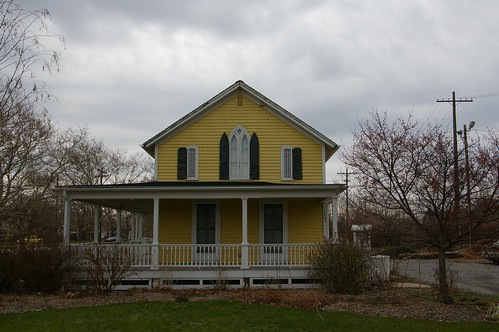
Glidden House (built 1909). 1901 Ford Drive.
When I look at the buildings that make up the area we now call University Circle, I tend to assume that the area was laid out and built in the 1900s and 1910s. Indeed, save for some buildings on the campus of Case Western Reserve University, there aren't any structures built much before this time.

The houses that haven't been replaced by newer buildings tend toward grand mansions - like the Hay-McKinney House - one of the structures occupied by the Western Reserve Historical Society.


Even the (relatively) smaller houses, like this pair on Magnolia Drive, seem quite suited to the flow of the boulevards.
Imagine my surprise when I learned that a good portion of the roads we use today were laid out a good 30 years before these houses were built.


Details of the 1874 D.J. Lake Atlas of Cuyahoga County, Ohio, used courtesy of Cleveland Public Library.
Jeptha Wade began developing his farm into a park (Wade Park) in the early 1870s. These details show the layout of the roads within the park as they were in 1874. The map is bounded by Euclid Avenue on the south, East 105th Street on the west, East 115th Street on the east, and Ashbury Avenue on the north. Note how similar the layout of these roads remain to the streets present in the University Circle area today. Perhaps they're part of the reason why the area has managed to retain something of a park-like presence.





